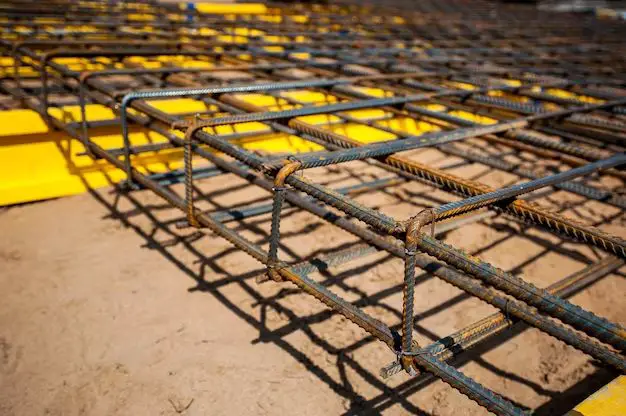Metal framing is a construction system that uses metal studs, tracks, and braces to build interior walls and partitions. Blocking is an important component in metal framing that provides stability, support, and attachment points for finishes and fixtures.
Page Contents
What is Blocking?
Blocking refers to small pieces of wood, metal, or plastic that are installed horizontally between studs in a metal framed wall. Blocking serves several purposes:
- Provides attachment points for drywall, cabinets, towel bars, and other finishes
- Strengthens the wall and prevents stud rotation
- Enhances fire resistance ratings
- Reduces sound transmission through walls
Blocking is typically installed at regular intervals, such as every 48 inches vertically, depending on the wall height. It is also required behind certain fixtures like grab bars, cabinets, and wall-mounted toilets.
Types of Blocking
There are a few different types of blocking used in metal framing:
Wood Blocking
– Solid wood blocking, usually 2x lumber, is nailed between studs.
– Provides strong and stable attachment points.
– Rot resistant lumber like pressure treated should be used.
– Avoid warping by using kiln dried lumber.
Metal Blocking
– Small galvanized steel channels installed horizontally between studs.
– More stable than wood and avoids rotting issues.
– Attaches easily with self-tapping screws.
– Comes in different sizes like 1-5/8″ channel.
Plastic Blocking
– Rigid plastic pieces fit snugly between metal studs.
– Lightweight and easy to cut to length.
– Provides sound deadening.
– Doesn’t deteriorate or warp.
Mineral Wool Blocking
– Strips of rigid mineral wool insulation.
– Enhances sound dampening between walls.
– Doubles as fire blocking.
– Not suitable for attachment.
Blocking Installation
Proper installation of blocking is important for performance. Here are some key tips:
- Cut blocking to fit snugly – should be slightly compressed between studs.
- Position mid-depth in the stud cavity.
- Use self-tapping drywall or deck screws to attach metal blocking.
- Nail wood blocking securely at both ends.
- Install before insulation which can push blocking out of place.
- Allow 1/4″ gaps between blocking and studs for thermal expansion.
| Blocking Type | Typical Size | Fasteners |
|---|---|---|
| Wood | 2×4 lumber | 2 16d nails at ends |
| Metal | 1-5/8″ channel | Self-tapping screws |
| Plastic | 1.5″ x 3.5″ strip | Friction fit |
Proper fasteners should be used to attach each blocking material securely between studs.
Blocking Locations
Typical locations where blocking should be installed in metal stud walls:
- Every 48″ vertically on tall walls
- Above and below wall openings like doors
- Behind heavy wall mounted objects like cabinets, TVs
- At the top and bottom of walls
- Behind tile backer board in wet areas
- At either end of soffits or dropped ceiling transitions
Refer to building codes for specific blocking requirements based on wall height and loading conditions.
Fire Blocking
In addition to structural blocking, fire blocking must be installed to compartmentalize wall cavities and prevent rapid fire spread. Fire blocks should be placed:
- At 10 foot intervals both vertically and horizontally
- At any ceiling and floor transitions
- Between stud bays at corners and wall intersections
- Around window and door openings
Mineral wool, fire-rated caulk, or solid blocking can provide effective fire blocks. Follow local codes for exact fire blocking specifications.
Sound Blocking
Blocking strategies can also minimize sound transmission through interior walls. Staggered wood studs, resilient channels, and insulation all help, but blocking is particularly useful because it divides the wall cavity into smaller segments.
Smaller cavities limit sound reverberations and transfer less noise to the other side. Sound blocking tips include:
- Use rigid isolation strips designed for sound blocking
- Alternate absorptive and rigid blocking strips
- Seal gaps around blocking with acoustical caulk
- Add additional layers of drywall for more mass
Conclusion
Blocking is a simple but important component in metal framing. Correctly installing wood, metal, or plastic blocking provides structural support, attachment points, fire resistance, and sound deadening. Carefully follow building codes and manufacturer specifications to ensure blocking is properly positioned and secured.
